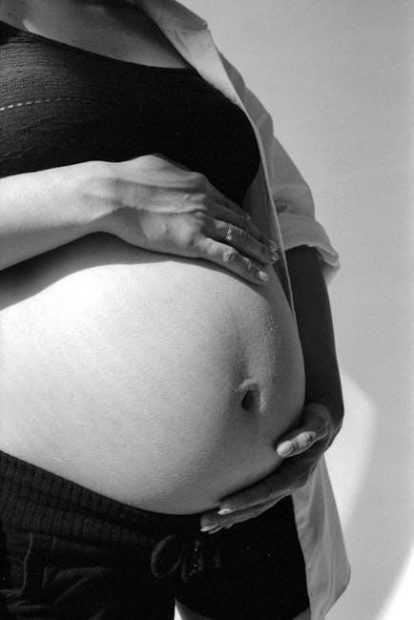A Proof of Life Form, often required for pension payments or government benefits, verifies an individual’s existence. It ensures continuity of payments and prevents fraudulent claims.
What is a Proof of Life Form?
A Proof of Life Form is a document used to confirm an individual’s existence, ensuring continuity of benefits like pensions or insurance. It often requires a signature, witness, or notarization. Available as PDF templates, these forms are essential for verifying identity and preventing fraud. They are commonly used by government agencies, financial institutions, and pension providers to maintain accurate records. The form typically includes personal details, a declaration of being alive, and supporting documentation. Its submission is crucial for uninterrupted benefit payments, particularly for those living abroad or in sensitive situations, such as kidnapping cases, where proof of life is critical.
Importance of Proof of Life Documentation
Proof of Life documentation is vital for verifying an individual’s existence, ensuring continuity of financial benefits and preventing fraudulent activities. It serves as a legal safeguard for both institutions and individuals, confirming eligibility for pensions, insurance, and government benefits. This documentation is particularly critical for those residing abroad, as it verifies their status for benefit payments. Additionally, it plays a key role in preventing identity theft and fraudulent claims, protecting sensitive information. Regular submission of proof of life forms helps maintain accurate records and ensures uninterrupted payments, making it an essential requirement for various legal and financial processes. Its importance extends to both personal and institutional security.

Legal Requirements
Proof of Life forms must adhere to specific legal standards, including notarization, witness signatures, and submission deadlines, ensuring compliance with pension and benefit regulations.
Life Certificates for UK State Pensions
UK pensioners residing abroad must provide a Life Certificate annually to the Department for Work and Pensions. This document confirms their eligibility to continue receiving state pension payments. The certificate must be signed in the presence of a witness, such as a justice of the peace or notary public, ensuring authenticity. Submissions are typically required in June and December, with late returns potentially halting payments. Additionally, the certificate may include a photocopy of a valid passport or national identity card, and a recent utility bill for address verification, as outlined in official guidelines to maintain benefit continuity and prevent fraud.
Notarization and Witness Requirements
Proof of Life forms often require notarization to ensure authenticity. A witness, such as a notary public, justice of the peace, or minister, must verify the individual’s identity and signature. The witness cannot be a relative, cohabitant, or legally connected to the person. They must confirm the signer’s presence and capacity, adding their own signature, title, and contact information. This process prevents fraud and ensures compliance with legal standards. Notarization is particularly critical for international submissions, where documentation must meet stringent verification criteria to maintain benefit continuity. Proper witnessing and notarization are essential for the form’s acceptance by authorities.
Submission Deadlines and Frequency
Proof of Life forms typically must be submitted by specific deadlines, often in June and December annually. Late submissions can result in payment suspension or termination after a grace period, usually 16 weeks. Pensioners must ensure timely submission to avoid disruptions in benefits. The form must be signed and accompanied by valid identification, such as a passport or national ID. Submissions can often be made via email or post, with scanned copies accepted if original documents are unavailable. Regular submission ensures ongoing benefit eligibility and confirms the individual’s status. Missing deadlines may require additional documentation or appeals to reinstate payments, adding administrative burdens.

Formats and Templates
Proof of Life forms are available in various formats, including downloadable PDF templates, fillable online forms, and printable documents. These templates simplify the certification process.
Downloading Proof of Life Form PDF Templates
Proof of Life Form PDF templates are widely available online, offering a convenient way to obtain and complete the necessary documentation. These templates are downloadable from reputable sources, such as government websites or legal document platforms, ensuring authenticity and compliance with official requirements. Many templates are fillable, allowing users to input details digitally before printing. They often include sections for personal information, witness signatures, and notarization, streamlining the process. Downloading a PDF template saves time and ensures the form meets legal standards. Secure and encrypted downloads are recommended to protect sensitive information. Always verify the source to avoid fraudulent or outdated versions.
Fillable Online Forms and Tools
Fillable online forms and tools simplify the creation and submission of Proof of Life documentation. Platforms like DocHub and pdfFiller offer digital templates that can be completed from any device. Users can type information directly into the form, saving time and reducing errors. Advanced tools allow for electronic signatures, enabling quick and secure submission. These online solutions eliminate the need for printing and scanning, making the process more efficient. Many platforms also provide storage options, ensuring easy access to completed forms. This digital approach streamlines the process, making it accessible for individuals worldwide to fulfill their Proof of Life requirements efficiently and securely.
Printable Templates for Offline Use
Printable templates for Proof of Life forms provide flexibility for individuals without reliable internet access. These templates, available as PDF or Word documents, can be downloaded from platforms like Thrive in College or legal form websites. Users can print the forms, fill them manually, and submit them via mail or in person. This method is ideal for those preferring physical documentation or facing connectivity issues. Many templates are designed to be fillable offline, offering convenience and efficiency. Printable templates ensure accessibility, making it easier for everyone to complete and submit their Proof of Life forms securely and efficiently, regardless of their location or technological access.

Purposes of Proof of Life Forms
Proof of Life forms primarily serve to confirm an individual’s existence, ensuring pension payments continue, verifying eligibility for insurance and government benefits, and preventing fraudulent claims.
Continuation of Pension Payments
Proof of Life forms are essential for ensuring uninterrupted pension payments, particularly for individuals residing outside their home country. Governments and pension providers require periodic verification to confirm beneficiaries are alive. For UK State Pensioners living abroad, the Department for Work and Pensions mandates Life Certificates to maintain payment continuity. These documents must be signed in the presence of a witness, such as a notary or official, and submitted within specified deadlines. Failure to comply can result in suspended payments. This process ensures funds are distributed accurately and prevents unauthorized access to benefits. Regular submissions, often bi-annually, are crucial for sustained financial support.
Verification for Insurance and Government Benefits
Proof of Life forms are critical for verifying eligibility for insurance payouts and government benefits. Insurance companies often require periodic confirmation to ensure benefits are paid to living beneficiaries. Similarly, government agencies use these forms to validate continued entitlement to social security or pension payments. For instance, the UK’s Department for Work and Pensions mandates Life Certificates for state pensioners living abroad. These documents must be signed in the presence of a witness, such as a notary or official, to confirm the individual’s existence. This process ensures benefits are distributed accurately and fraudulently claimed payments are prevented. Timely submission is essential to avoid interruptions in payments.
Prevention of Fraudulent Claims
Proof of Life forms are essential in preventing fraudulent claims by ensuring payments are made only to living beneficiaries. Without verification, fraudsters could continue receiving benefits illegally after an individual’s passing. These forms require signatures, photo IDs, and sometimes notarization, adding layers of security. For example, pension systems use Life Certificates to confirm recipients are alive, halting payments upon failure to provide valid proof. This measure safeguards public funds and upholds the integrity of benefit distribution systems, protecting both governments and legitimate claimants from financial exploitation and misuse of resources.

Specialized Uses
Proof of Life forms are used for verifying beneficiaries in high-risk situations, such as kidnapping cases, and for armed forces pensioners to ensure payments reach legitimate recipients.
Life Certificates for Armed Forces Pensioners
Armed forces pensioners often require Life Certificates to confirm their status and ensure uninterrupted pension payments. These certificates must be signed by authorized officials, such as notaries or high-ranking officers, and submitted periodically. The process typically involves providing photographic identification and a witness statement to verify the pensioner’s identity and existence. This documentation is crucial for maintaining eligibility and preventing fraudulent claims. Specific forms, like the AFP Pensioners I.D., may be required, along with a notarized affidavit. The certificate ensures that benefits continue to reach legitimate recipients, safeguarding both the pensioner and the issuing authority from potential misuse or fraudulent activities.
Proof of Life in Kidnapping or Abduction Cases
In kidnapping or abduction cases, Proof of Life forms are critical to confirm the victim’s survival. These documents often require recent photographs with a dated newspaper or a witness signature. Authorities use such forms to negotiate safely and verify the victim’s condition. The process ensures that sensitive information is protected, preventing further harm. Submission deadlines are strictly enforced to maintain the integrity of the process. This documentation is essential for legal and humanitarian reasons, ensuring the victim’s safety while preventing fraudulent claims. Security measures are heightened to safeguard both the victim and the information shared during these critical situations.

Filling Out the Form
Fill out the Proof of Life form accurately, ensuring all personal details, signatures, and witness statements are included. Submit on time to avoid payment interruptions and ensure compliance with legal requirements.
Step-by-Step Guide
Complete the form by entering personal details, including name, date of birth, and identification number. Sign the document in the presence of a witness, such as a notary public or authorized official. Ensure the witness signs and dates the form, confirming your identity and presence. Attach required documents, like a photocopy of your ID or passport. Review the form for accuracy and completeness. Submit the form by the specified deadline, either online or via mail, depending on the issuer’s instructions. Retain a copy for your records to ensure compliance and avoid disruptions in payments or benefits.
Required Signatures and Documentation
The Proof of Life form must be signed by the individual and a witness, such as a notary public, justice of the peace, or authorized government official. The witness must verify the individual’s identity and confirm their presence at the time of signing. Required documentation includes a valid government-issued ID, such as a passport or national ID card. In some cases, a photocopy of the ID must be attached to the form. The form must be signed in the presence of the witness, who will also add their signature, name, and contact information. Submitting incomplete or unsigned forms may result in delayed or halted payments. Always retain a copy for personal records.
Photo and ID Requirements
A valid government-issued ID, such as a passport or national ID card, must accompany the Proof of Life form. A recent passport-sized photo of the individual is often required to confirm their identity. The ID and photo must be legible and not expired. In some cases, the witness or notary public may also verify the photo ID during the signing process. Ensure the ID matches the name and details on the form. Retain a copy of the submitted documents for your records. Failure to provide clear and valid identification may delay processing or result in rejection of the form.

Security and Confidentiality
Proof of Life forms contain confidential information. Unauthorized use or disclosure can lead to legal consequences. Ensure secure handling and storage to protect sensitive data and prevent fraud.
Protection of Sensitive Information
Proof of Life forms contain highly sensitive personal data, requiring stringent security measures. Encryption and secure storage are essential to prevent unauthorized access. Handling such documents demands strict confidentiality to avoid identity theft or fraud. Ensure forms are transmitted through encrypted channels and stored in locked, access-restricted environments. Sharing or disclosure without consent can lead to severe legal consequences. Always verify the authenticity of recipients before submitting these forms. Proper disposal of outdated documents is equally critical to safeguarding sensitive information.
Consequences of Misuse
Misuse of Proof of Life forms can lead to severe legal and financial repercussions. Fraudulent claims or identity theft resulting from mishandled forms may result in criminal charges and financial penalties. Unauthorized disclosure of sensitive information can compromise an individual’s privacy, potentially leading to identity theft or fraud. Incorrectly submitting false information or tampering with the document can result in loss of benefits, pensions, or government support. Additionally, institutions may impose stricter verification processes, delaying payments for legitimate claimants. Misuse undermines trust in the system, affecting both individuals and organizations relying on these forms for essential services.

Regional Variations
Proof of Life forms vary by region, with specific requirements for UK state pensions and international adaptations ensuring compliance with local laws and documentation standards.
Proof of Life Forms in the UK
In the UK, Proof of Life forms are essential for verifying the existence of individuals receiving state pensions or benefits. These forms are typically required for pensioners living outside the UK to ensure payments continue uninterrupted. The UK Department for Work and Pensions mandates Life Certificates, which must be signed in the presence of a witness, such as a Justice of the Peace or Notary Public. The form may also require notarization and a photocopy of the pensioner’s ID. Submission deadlines are usually in June and December annually. The process ensures compliance with UK legal standards and prevents fraudulent claims.
International Requirements and Adaptations
Internationally, Proof of Life forms vary to accommodate local laws and regulations. Countries often require different witnessing authorities, such as notaries or government officials, to validate the document. For instance, some nations may demand additional documentation like passports or national ID cards. The frequency of submissions can also differ, with some requiring annual verification while others may need it semi-annually. Language and formatting adjustments are common to ensure compliance with regional standards. These adaptations ensure the form’s legitimacy and effectiveness across borders, facilitating smooth continuation of benefits for international residents. Governments prioritize fraud prevention through these tailored requirements. Compliance is crucial to maintain benefit eligibility.
A Proof of Life form is crucial for verifying existence, ensuring pension continuity, and preventing fraud. Its proper submission is essential for maintaining benefits and legal compliance.
A Proof of Life form is essential for confirming an individual’s existence, ensuring continuity of benefits like pensions and insurance. It prevents fraudulent claims by verifying identity and survival. The form typically requires notarization, witness signatures, and photographic identification. Submission deadlines and specific formats, such as PDF templates, must be adhered to, with options for online or offline completion. Security is critical to protect sensitive information, and misuse can lead to legal consequences. Regular updates and regional variations, like UK Life Certificates, highlight its adaptability. This documentation remains vital for maintaining legal and financial integrity across various sectors.
Future of Proof of Life Documentation
The future of Proof of Life documentation lies in digitalization and enhanced security. Online platforms now offer fillable PDF templates and electronic signatures, streamlining the process. Biometric verification and AI-driven systems are emerging to combat fraud. Governments and institutions are adopting blockchain for tamper-proof records, ensuring data integrity. As technology advances, these forms will become more accessible and secure, reducing the risk of misuse. The integration of digital tools promises efficiency, convenience, and reliability, making Proof of Life documentation a cornerstone of modern identity verification and benefit management systems.
